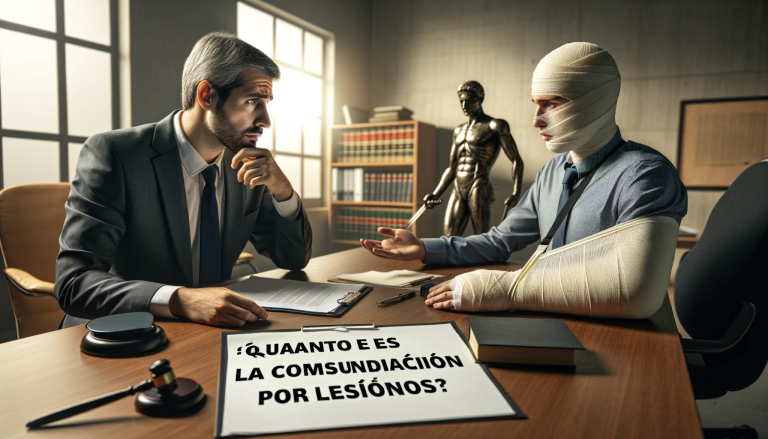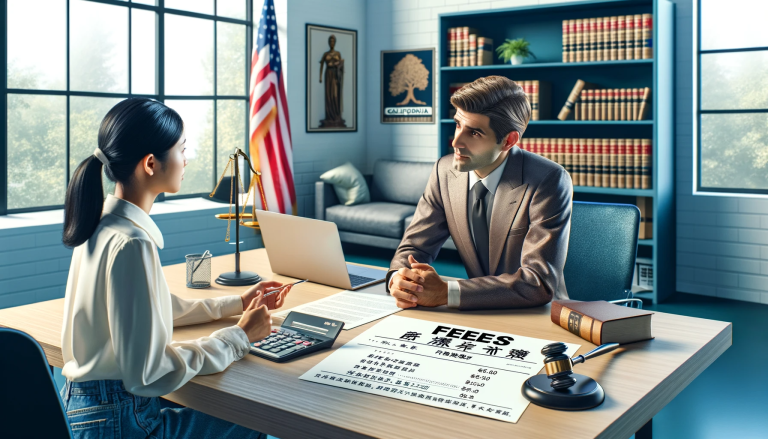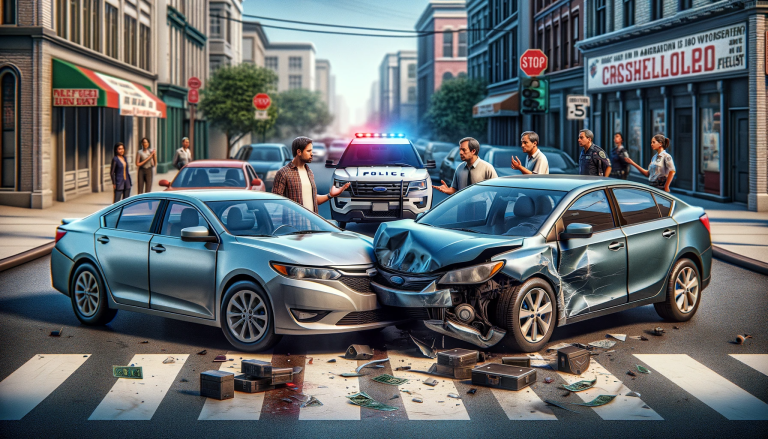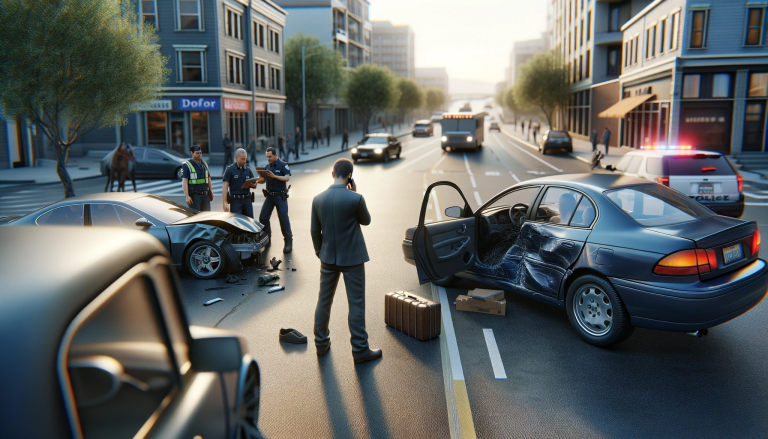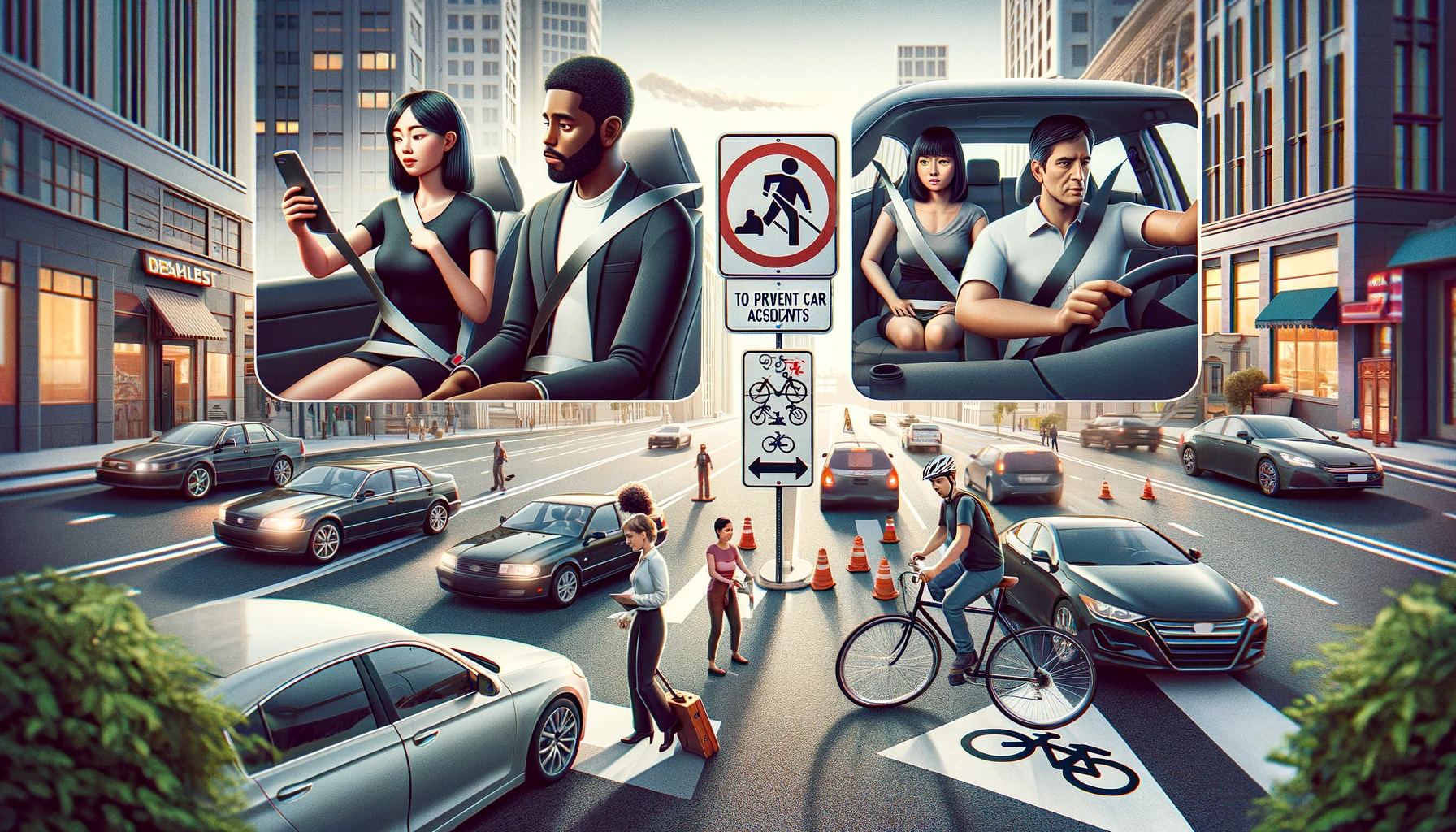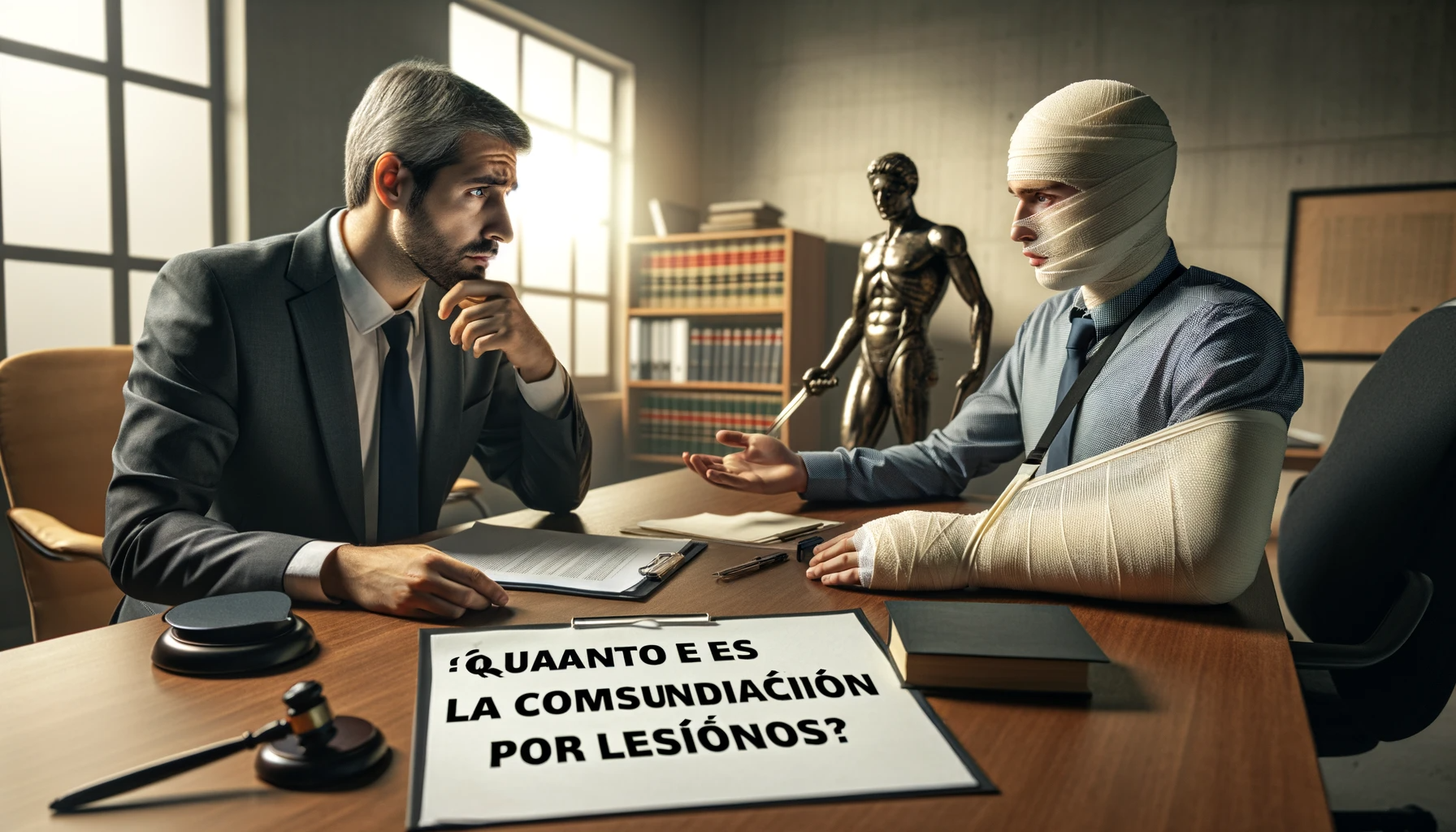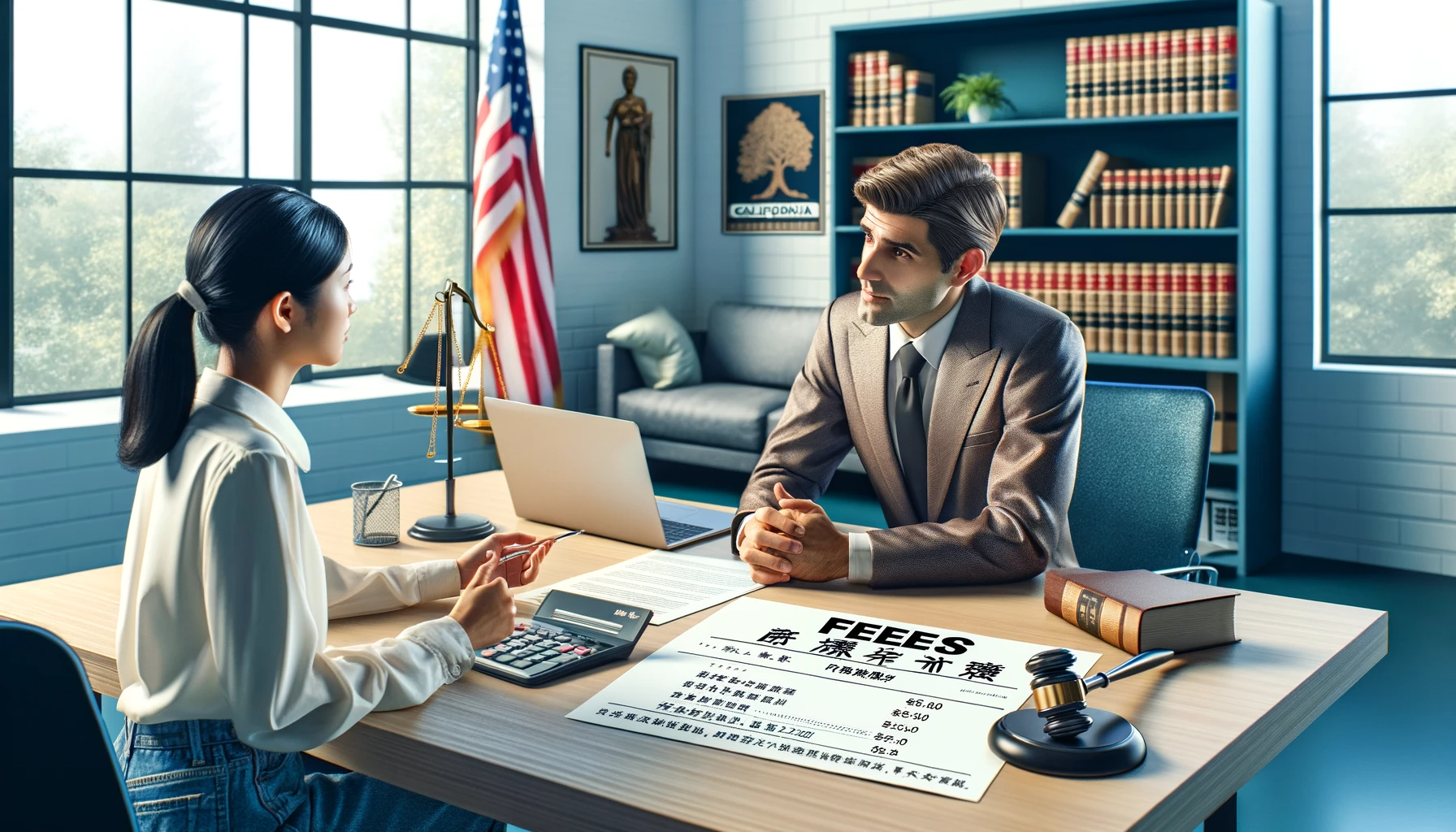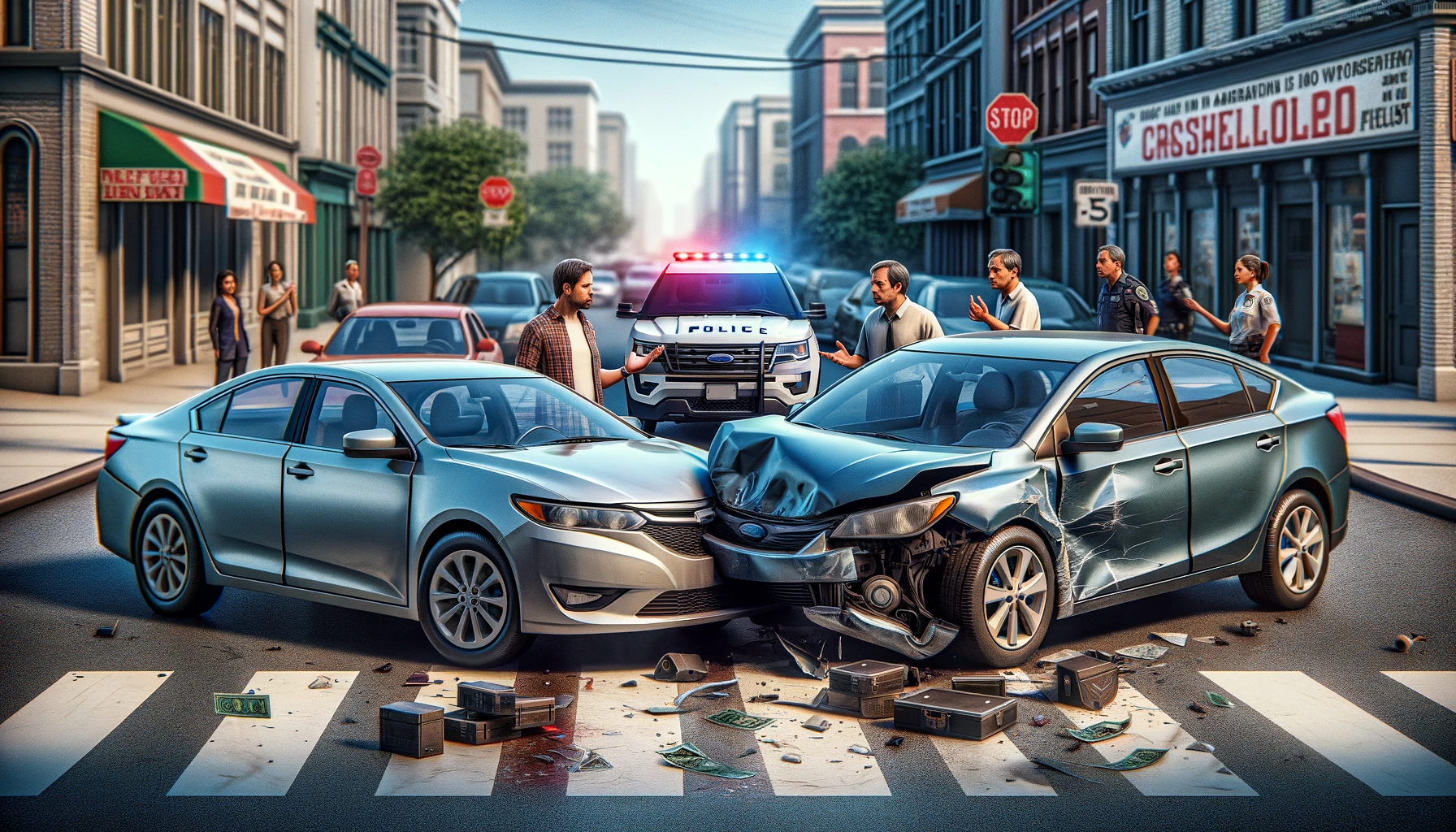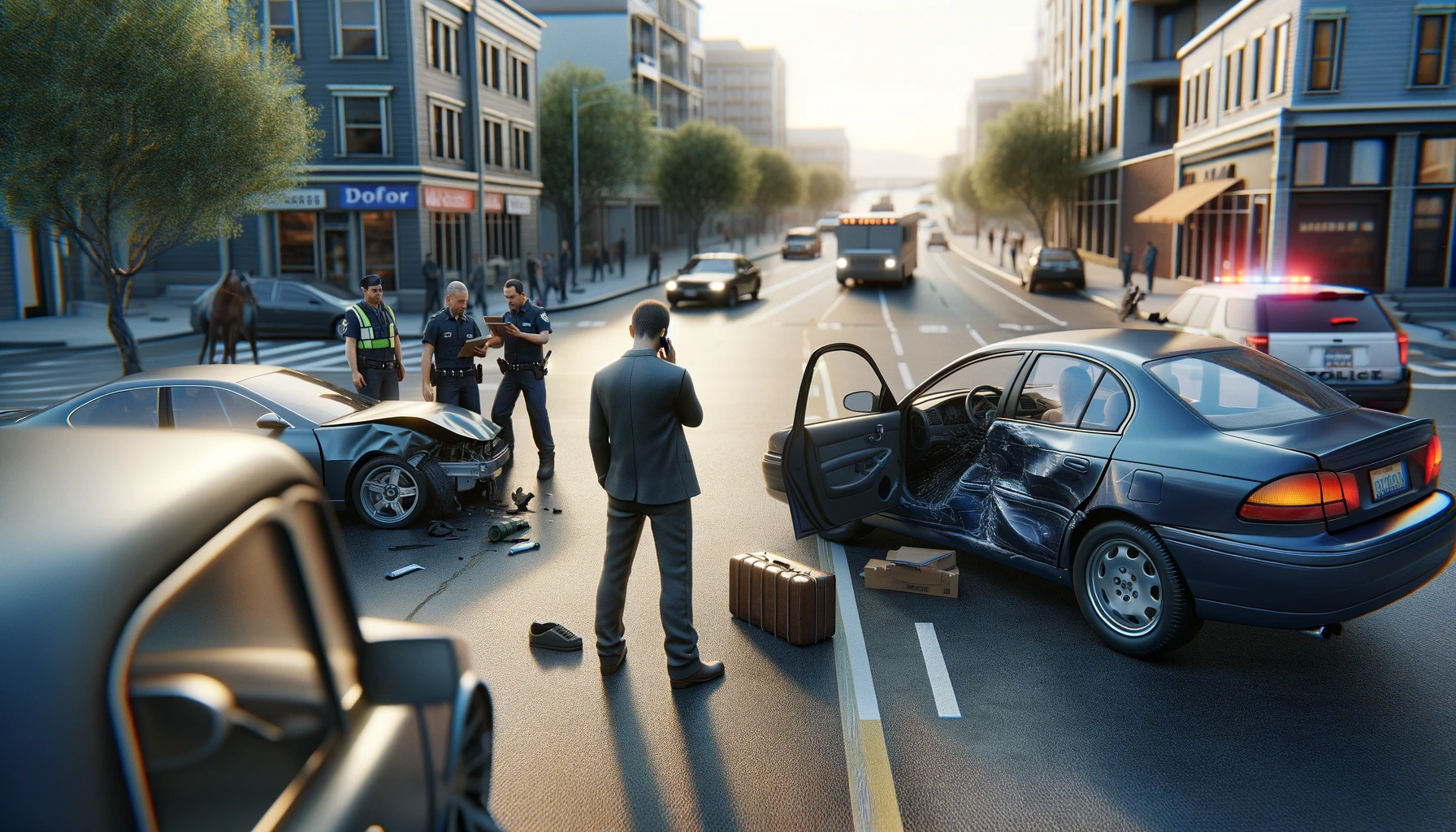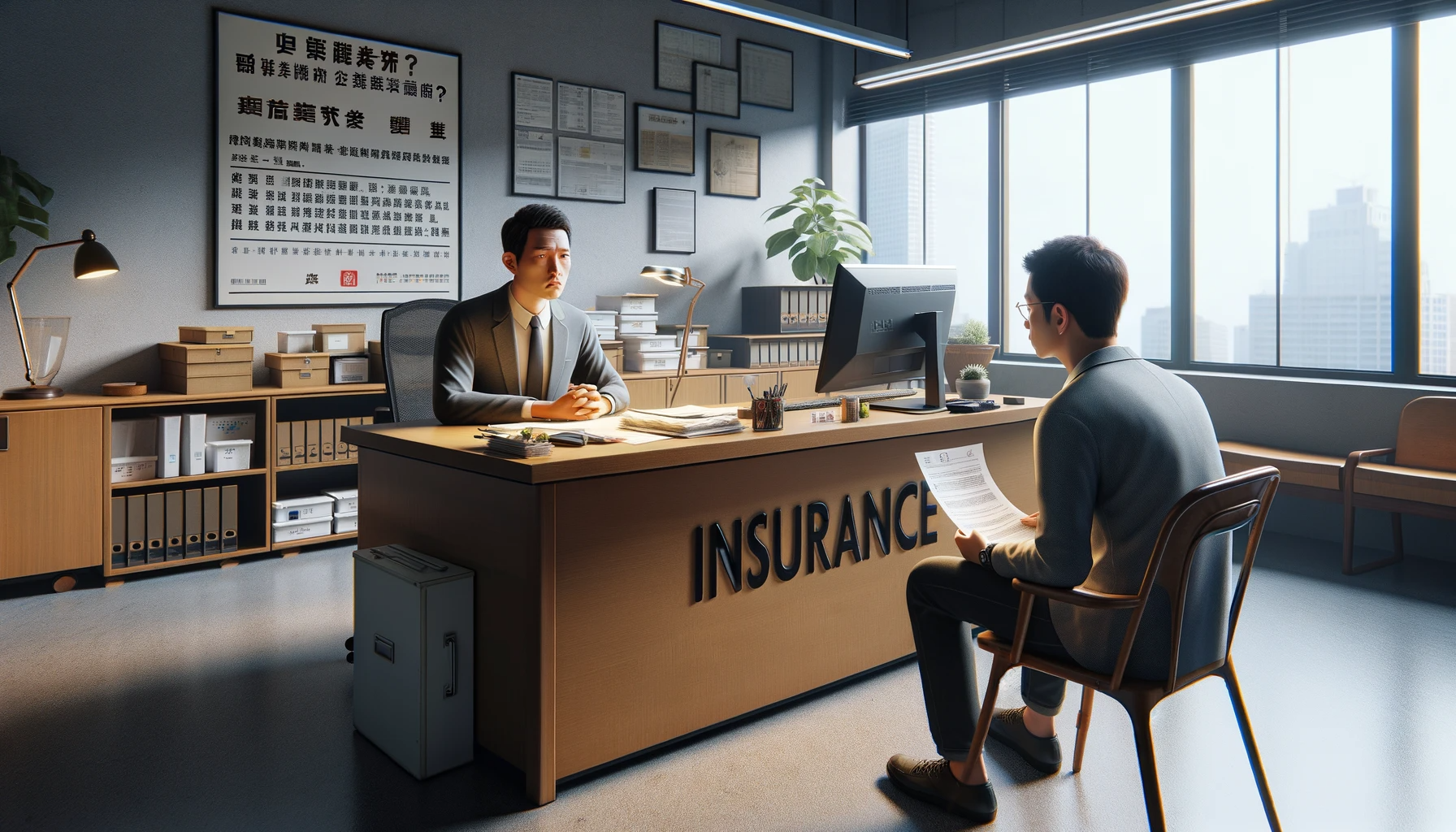Legal Resources for Auto and Bicycle Accident: Navigating the Road to Justice
Auto and bicycle accidents can be life-changing events, impacting everything from your physical health and mental well-being to your financial stability. For those involved, the aftermath often involves navigating a complex legal landscape, one that can feel intimidating without the right guidance. Fortunately, a range of legal resources exists to make this journey clearer, empowering accident victims to seek the compensation and support they need. Let’s break down these resources step-by-step to help you confidently approach each part of the process.
Understanding Auto and Bicycle Accident Claims
Accidents may be sudden and unexpected, but knowing how the claims process works can equip you to make informed decisions afterward. A “claim” is your formal request for compensation for damages resulting from an accident. This request can cover various types of losses, such as medical bills, property repairs, and income loss due to time away from work.
Whether you're dealing with an auto or bicycle accident, understanding the unique characteristics of each claim type is essential. Each claim hinges on proving fault or negligence and effectively documenting the extent of damages. Knowing the right steps to take from the start can significantly impact the outcome of your case.
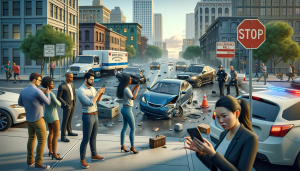
What Constitutes a Legal Claim?
A legal claim typically becomes valid when it involves another party’s negligence or wrongdoing. For instance, if a driver fails to yield to a bicyclist in a marked bike lane, causing a collision, the injured party has grounds to file a claim against that driver. In such cases, the plaintiff (the injured party) needs to demonstrate that the other party acted negligently, leading directly to the accident and resulting damages.
Legal claims in auto and bicycle accidents often revolve around proving the duty of care. Every driver, cyclist, and pedestrian has a responsibility to act safely and follow the rules of the road. When this duty is breached, and harm results, a claim may be pursued to recover damages.
Common Causes of Accidents
Accidents can stem from a variety of factors, ranging from distracted driving and speeding to weather conditions or poor road signage. In the case of cyclists, who are more exposed than motorists, understanding these causes is critical for identifying and establishing fault. Common causes include:
- Distracted Driving: Drivers texting, eating, or otherwise not fully focused on the road.
- Failure to Yield: Motorists may fail to yield at intersections or bike lanes.
- Improper Lane Changes: Cars shifting lanes abruptly without checking for cyclists.
- Speeding: Higher speeds reduce reaction time and increase the likelihood of serious injury.
Being aware of these factors helps victims and their legal representatives build a strong case by pinpointing specific instances of negligence.
Key Differences Between Auto and Bicycle Accidents
Auto and bicycle
accidents are often interrelated but are treated differently under the law, affecting how liability is determined and what types of compensation are available.
Legal Distinctions
Auto accidents generally involve strict liability, where even a minor infraction (such as a failure to signal) can impact the case. In contrast, bicycle accidents often carry an implicit bias favoring cyclists, especially if they were in a designated lane and obeying traffic rules. This nuance can be particularly helpful in cases where motorists are at fault, as many states have statutes that protect cyclists and hold drivers to a higher standard of care.
Differences in Liability
Liability in auto-only
accidents often hinges on the behaviors and actions of each driver, such as speed, attention, and road conditions. In contrast, for auto-bicycle collisions, the motorist is typically presumed liable if the cyclist was following traffic laws, particularly in designated lanes. In these cases, the cyclist’s adherence to safety rules can support their claim and possibly increase the chances of fair compensation.
Legal Rights of Accident Victims
Knowing your rights after an
accident can empower you to make informed choices, ensuring you don’t settle for less than you deserve.
Rights to Compensation
Both drivers and cyclists have the right to pursue compensation for medical expenses, lost wages, property damages, and non-economic losses like emotional distress. These rights exist whether you’re a motorist or a cyclist, and understanding what you’re entitled to can help you evaluate settlement offers and navigate negotiations confidently.
Legal Protection for Vulnerable Road Users
Several states classify cyclists as “vulnerable road users,” granting them additional legal protections. These classifications recognize the heightened risks faced by cyclists on the road and aim to ensure that motorists exercise extra caution. Such protections can influence liability decisions, placing the onus on drivers to account for cyclists’ safety, especially in shared spaces.
Steps to Take Immediately After an Accident
The aftermath of an
accident can be overwhelming, but the steps you take immediately following the incident can have a profound effect on the success of your claim.
Documenting Evidence
Gathering evidence on the scene is vital. Take photos of all involved vehicles, your bicycle (if applicable), and any visible injuries. Collect witness information, note weather and road conditions, and, if possible, obtain a copy of any
accident report filed by law enforcement. Each piece of documentation strengthens your case, serving as tangible proof of what occurred.
Seeking Medical Attention
Prioritizing your health after an
accident is critical, not only for recovery but also for legal purposes. Even if injuries seem minor, getting a medical examination provides documentation of any harm suffered, which is essential for proving damages in your claim.
Finding Legal Help for Accident Cases
Enlisting legal professionals experienced in auto and bicycle
accidents can be instrumental in navigating the often-complex landscape of
accident claims.
Types of Lawyers Specializing in Accidents
Personal injury attorneys who specialize in auto and bicycle
accidents possess a deep understanding of the nuances involved in these cases. These professionals understand the standards of proof needed, as well as the common tactics used by insurance companies to minimize payouts. Their expertise can guide you through everything from evidence collection to negotiating settlements.
How to Choose the Right Attorney
When choosing an attorney, look for a professional with a solid track record in handling similar cases. Check for reviews, ask about success rates, and seek someone willing to offer a free consultation to discuss your case. During this meeting, inquire about their approach to handling cases, timelines, and fee structures.
Compensation Types in Auto and Bicycle Accidents
Compensation in
accident cases typically falls into two categories: economic and non-economic damages, each covering distinct aspects of loss.
Economic Damages
Economic damages are tangible financial losses, such as medical bills, repair costs, and lost wages. They are relatively straightforward to calculate, based on documentation like bills, receipts, and pay stubs.
Non-Economic Damages
Non-economic damages cover intangible losses, such as pain and suffering, emotional distress, and loss of enjoyment of life. Although more challenging to quantify, these damages are often significant, especially in cases involving severe
injury or trauma.
Insurance Claims and Coverage
Insurance coverage can provide critical support after an
accident, but understanding what’s covered is essential for maximizing your claim.
What Insurance Covers for Auto and Bicycle Accidents
For
auto accidents, standard policies typically cover medical expenses, property damage, and sometimes lost wages. If the at-fault driver’s insurance is insufficient, cyclists may turn to their own health or homeowner’s insurance for additional coverage. Knowing your options can help bridge the gap if the responsible party’s insurance falls short.
Navigating Insurance Settlements
Insurance companies often seek to minimize payouts, so be cautious when accepting the first settlement offer. Consult with a lawyer before agreeing to any terms, as they can assess the offer’s fairness based on your specific case details.
Navigating Insurance Denials and Delays
When it comes to insurance claims, denial or delay tactics can be disheartening and stressful, especially when medical bills and repair costs are mounting. Insurance companies may deny claims for various reasons, such as disputing fault, citing inadequate documentation, or arguing that damages aren’t covered under the policy. These delays or outright denials make legal assistance incredibly valuable. Attorneys can pressure insurers to move the claims process forward by scrutinizing policy details, submitting detailed documentation, and, if necessary, escalating the matter through legal channels. If an insurance company acts in bad faith, legal action can sometimes hold them accountable, ensuring the claimant receives fair treatment.
The Role of Police Reports in Legal Claims
Police reports serve as a neutral, third-party account of an
accident, often essential for substantiating a claim. Typically prepared at the accident scene by law enforcement officers, these reports include crucial details like the names and statements of those involved, witness information, weather conditions, and a preliminary assessment of fault. This document provides a factual foundation that lawyers and insurers can rely upon, and it often becomes a critical piece of evidence, especially when there are disputes over who is at fault.
Importance of Filing a Report
Filing a police report is a critical first step after an
accident, even if the injuries or damages initially appear minor. This report is often the first document lawyers and insurance adjusters look for when assessing an accident case. It provides credibility to your claims and signals to insurers that the incident was serious enough to warrant official documentation. In many jurisdictions, failing to report an accident may even reduce or negate compensation eligibility.
Using the Report as Evidence
Police reports carry significant weight in court and settlement negotiations. They document an unbiased assessment of the accident and may include citations issued to at-fault parties, which can strongly support your case. While the report alone doesn’t establish liability, it’s a compelling piece of evidence that can help validate your claims, especially when combined with eyewitness testimonies, photos, and medical records.
Filing a Lawsuit for Auto or Bicycle Accident Claims
In some cases, insurance negotiations may reach an impasse, making it necessary to pursue legal action. Filing a lawsuit is a more formal way to seek compensation and holds the responsible party accountable under the law. This path can also prompt reluctant insurers to take the claim more seriously.
Steps in Filing a Lawsuit
The lawsuit process starts with consulting an attorney, who will evaluate your case and help you file the appropriate documents. The initial filing includes a complaint, detailing the
accident, injuries, and the compensation sought. Next, the discovery phase involves collecting further evidence, which may include depositions, medical records, and expert testimonies. Throughout this process, your attorney handles the legal requirements, communicates with the opposing counsel, and prepares you for any hearings or potential settlement offers.
Statute of Limitations
Each state has a statute of limitations—typically between one to three years—within which
accident victims must file their claims. Failing to act within this timeframe may result in losing the right to seek compensation entirely. To protect your rights, it’s crucial to consult a lawyer promptly, allowing sufficient time to gather evidence, file the lawsuit, and build a compelling case.
Common Challenges in Auto and Bicycle Accident Cases
Auto and bicycle accident cases often face unique challenges, especially in proving fault and dealing with insurance complications. Insurance adjusters may attempt to downplay the extent of injuries, while defendants may argue contributory negligence, claiming the injured party was partially at fault.
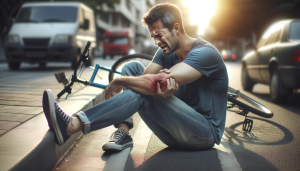 Proving Fault
Proving Fault
In complex cases, proving fault may require evidence such as witness statements, traffic camera footage, and expert opinions. Accident reconstruction specialists can create simulations based on available evidence to illustrate how the
accident occurred, which can be persuasive in both settlements and court. These experts analyze data points like skid marks, vehicle damage, and impact angles to help establish fault accurately.
Dealing with Uninsured or Underinsured Drivers
If the at-fault driver lacks sufficient insurance, pursuing compensation becomes more challenging. However, some victims may have uninsured or underinsured motorist coverage through their own insurance, allowing them to file a claim even if the other driver is underinsured. In cases where this coverage is absent, seeking compensation through a lawsuit or lien on the at-fault party’s assets may be necessary.
Using Witnesses and Expert Testimonies
Witnesses and expert testimonies can strengthen your case by providing clarity and supporting your claims. Witnesses offer firsthand accounts of the
accident, corroborating your version of events, while experts provide specialized insights into various aspects of the case.
How Witnesses Strengthen Claims
Witnesses who saw the
accident unfold can provide objective observations, detailing what they saw, heard, and how the accident occurred. Their testimonies are often critical, especially if they provide information that isn’t readily available, such as vehicle speed, road conditions, or signs of reckless behavior by the other party. A strong witness testimony can strengthen your case significantly and increase the likelihood of a favorable outcome.
The Role of Expert Testimonies
Expert witnesses, such as medical professionals or
accident reconstruction specialists, can provide valuable insights into complex aspects of the case. For instance, a medical expert can explain the severity of injuries and their long-term impact, while an accident reconstructionist can recreate the accident scene to clarify how it likely occurred. These testimonies are often compelling and can sway both judges and juries, making them an asset in challenging cases.
Alternative Dispute Resolution (ADR)
Alternative Dispute Resolution methods, like mediation and arbitration, offer a less confrontational approach to resolving accident claims and can expedite settlements. Unlike court proceedings, ADR methods are typically faster, more cost-effective, and allow both parties to negotiate directly.
Benefits of Mediation and Arbitration
Mediation involves a neutral third-party mediator who facilitates discussions between both parties to reach a mutually acceptable settlement. Arbitration, on the other hand, is more formal and involves a neutral arbitrator who hears both sides and then makes a binding decision. Both options are less time-consuming than trials and reduce legal costs, making them attractive options for
accident victims seeking a resolution without the stress of prolonged litigation.
ADR vs. Going to Trial
While ADR can often be quicker and less adversarial than a full trial, it may not yield as high a compensation as a court case could, particularly in cases involving significant injuries. Consulting a lawyer before agreeing to ADR is essential, as they can assess if the proposed settlement meets your needs and if ADR is the best choice based on the specifics of your case.
How Laws Differ by State
Traffic laws and liability standards vary from state to state, affecting everything from fault determination to compensation caps. For example, some states have strict liability laws, while others follow a comparative negligence model, which can impact the amount of compensation you may receive if you’re found partially at fault.
State-Specific Traffic and Liability Laws
State laws regarding right-of-way, helmet use, and designated bike lanes can all impact the outcome of bicycle
accident cases. Knowing local regulations is essential to understand your position and potential liability. In some states, motorists must maintain a specific distance when overtaking cyclists, while other states lack such protections, making it essential to understand these variations.
Understanding Local Regulations
Certain states have unique laws for bicycles, such as specific guidelines for sharing the road with vehicles or the legal status of electric bikes. These local regulations can influence liability decisions, especially when determining who had the right-of-way and whether each party adhered to the law. Your attorney’s familiarity with these nuances can make a significant difference in accurately representing your case.
Conclusion
Auto and bicycle
accident claims may be complex, but with the right legal resources, the process becomes more manageable. Whether it’s consulting an experienced attorney, documenting evidence thoroughly, or understanding state-specific laws, taking proactive steps can enhance your chances of a successful outcome. Seeking legal assistance can clarify your rights, streamline the process, and empower you to pursue fair compensation confidently. Don’t hesitate to explore every available option to protect your interests and achieve justice.
Look for an attorney who has the right legal resources for your legal needs.
Contact us here on the
Warmuth Law website or through our hotline 888-517-9888.
Frequently Asked Questions (FAQ's)
1. What is the typical timeline for accident cases?
Accident cases vary, but most take anywhere from a few months to over a year, depending on the complexity.
2. Can you claim pain and suffering in bicycle accidents?
Yes, if you’re injured, you can seek compensation for both physical and emotional pain and suffering.
3. Do you need an attorney for minor accidents?
It depends, but having legal guidance can ensure you receive fair compensation, even for minor incidents.
4. How are accident settlements calculated?
Settlements consider medical bills, lost wages, property damage, and pain and suffering.
5. What should you do if the at-fault driver has no insurance?
You may need to use your own insurance, such as uninsured motorist coverage, or pursue compensation through legal channels.

 Proving Fault
In complex cases, proving fault may require evidence such as witness statements, traffic camera footage, and expert opinions. Accident reconstruction specialists can create simulations based on available evidence to illustrate how the accident occurred, which can be persuasive in both settlements and court. These experts analyze data points like skid marks, vehicle damage, and impact angles to help establish fault accurately.
Dealing with Uninsured or Underinsured Drivers
If the at-fault driver lacks sufficient insurance, pursuing compensation becomes more challenging. However, some victims may have uninsured or underinsured motorist coverage through their own insurance, allowing them to file a claim even if the other driver is underinsured. In cases where this coverage is absent, seeking compensation through a lawsuit or lien on the at-fault party’s assets may be necessary.
Using Witnesses and Expert Testimonies
Witnesses and expert testimonies can strengthen your case by providing clarity and supporting your claims. Witnesses offer firsthand accounts of the accident, corroborating your version of events, while experts provide specialized insights into various aspects of the case.
How Witnesses Strengthen Claims
Witnesses who saw the accident unfold can provide objective observations, detailing what they saw, heard, and how the accident occurred. Their testimonies are often critical, especially if they provide information that isn’t readily available, such as vehicle speed, road conditions, or signs of reckless behavior by the other party. A strong witness testimony can strengthen your case significantly and increase the likelihood of a favorable outcome.
The Role of Expert Testimonies
Expert witnesses, such as medical professionals or accident reconstruction specialists, can provide valuable insights into complex aspects of the case. For instance, a medical expert can explain the severity of injuries and their long-term impact, while an accident reconstructionist can recreate the accident scene to clarify how it likely occurred. These testimonies are often compelling and can sway both judges and juries, making them an asset in challenging cases.
Alternative Dispute Resolution (ADR)
Alternative Dispute Resolution methods, like mediation and arbitration, offer a less confrontational approach to resolving accident claims and can expedite settlements. Unlike court proceedings, ADR methods are typically faster, more cost-effective, and allow both parties to negotiate directly.
Benefits of Mediation and Arbitration
Mediation involves a neutral third-party mediator who facilitates discussions between both parties to reach a mutually acceptable settlement. Arbitration, on the other hand, is more formal and involves a neutral arbitrator who hears both sides and then makes a binding decision. Both options are less time-consuming than trials and reduce legal costs, making them attractive options for accident victims seeking a resolution without the stress of prolonged litigation.
ADR vs. Going to Trial
While ADR can often be quicker and less adversarial than a full trial, it may not yield as high a compensation as a court case could, particularly in cases involving significant injuries. Consulting a lawyer before agreeing to ADR is essential, as they can assess if the proposed settlement meets your needs and if ADR is the best choice based on the specifics of your case.
How Laws Differ by State
Traffic laws and liability standards vary from state to state, affecting everything from fault determination to compensation caps. For example, some states have strict liability laws, while others follow a comparative negligence model, which can impact the amount of compensation you may receive if you’re found partially at fault.
State-Specific Traffic and Liability Laws
State laws regarding right-of-way, helmet use, and designated bike lanes can all impact the outcome of bicycle accident cases. Knowing local regulations is essential to understand your position and potential liability. In some states, motorists must maintain a specific distance when overtaking cyclists, while other states lack such protections, making it essential to understand these variations.
Understanding Local Regulations
Certain states have unique laws for bicycles, such as specific guidelines for sharing the road with vehicles or the legal status of electric bikes. These local regulations can influence liability decisions, especially when determining who had the right-of-way and whether each party adhered to the law. Your attorney’s familiarity with these nuances can make a significant difference in accurately representing your case.
Conclusion
Auto and bicycle accident claims may be complex, but with the right legal resources, the process becomes more manageable. Whether it’s consulting an experienced attorney, documenting evidence thoroughly, or understanding state-specific laws, taking proactive steps can enhance your chances of a successful outcome. Seeking legal assistance can clarify your rights, streamline the process, and empower you to pursue fair compensation confidently. Don’t hesitate to explore every available option to protect your interests and achieve justice.
Look for an attorney who has the right legal resources for your legal needs.
Contact us here on the Warmuth Law website or through our hotline 888-517-9888.
Proving Fault
In complex cases, proving fault may require evidence such as witness statements, traffic camera footage, and expert opinions. Accident reconstruction specialists can create simulations based on available evidence to illustrate how the accident occurred, which can be persuasive in both settlements and court. These experts analyze data points like skid marks, vehicle damage, and impact angles to help establish fault accurately.
Dealing with Uninsured or Underinsured Drivers
If the at-fault driver lacks sufficient insurance, pursuing compensation becomes more challenging. However, some victims may have uninsured or underinsured motorist coverage through their own insurance, allowing them to file a claim even if the other driver is underinsured. In cases where this coverage is absent, seeking compensation through a lawsuit or lien on the at-fault party’s assets may be necessary.
Using Witnesses and Expert Testimonies
Witnesses and expert testimonies can strengthen your case by providing clarity and supporting your claims. Witnesses offer firsthand accounts of the accident, corroborating your version of events, while experts provide specialized insights into various aspects of the case.
How Witnesses Strengthen Claims
Witnesses who saw the accident unfold can provide objective observations, detailing what they saw, heard, and how the accident occurred. Their testimonies are often critical, especially if they provide information that isn’t readily available, such as vehicle speed, road conditions, or signs of reckless behavior by the other party. A strong witness testimony can strengthen your case significantly and increase the likelihood of a favorable outcome.
The Role of Expert Testimonies
Expert witnesses, such as medical professionals or accident reconstruction specialists, can provide valuable insights into complex aspects of the case. For instance, a medical expert can explain the severity of injuries and their long-term impact, while an accident reconstructionist can recreate the accident scene to clarify how it likely occurred. These testimonies are often compelling and can sway both judges and juries, making them an asset in challenging cases.
Alternative Dispute Resolution (ADR)
Alternative Dispute Resolution methods, like mediation and arbitration, offer a less confrontational approach to resolving accident claims and can expedite settlements. Unlike court proceedings, ADR methods are typically faster, more cost-effective, and allow both parties to negotiate directly.
Benefits of Mediation and Arbitration
Mediation involves a neutral third-party mediator who facilitates discussions between both parties to reach a mutually acceptable settlement. Arbitration, on the other hand, is more formal and involves a neutral arbitrator who hears both sides and then makes a binding decision. Both options are less time-consuming than trials and reduce legal costs, making them attractive options for accident victims seeking a resolution without the stress of prolonged litigation.
ADR vs. Going to Trial
While ADR can often be quicker and less adversarial than a full trial, it may not yield as high a compensation as a court case could, particularly in cases involving significant injuries. Consulting a lawyer before agreeing to ADR is essential, as they can assess if the proposed settlement meets your needs and if ADR is the best choice based on the specifics of your case.
How Laws Differ by State
Traffic laws and liability standards vary from state to state, affecting everything from fault determination to compensation caps. For example, some states have strict liability laws, while others follow a comparative negligence model, which can impact the amount of compensation you may receive if you’re found partially at fault.
State-Specific Traffic and Liability Laws
State laws regarding right-of-way, helmet use, and designated bike lanes can all impact the outcome of bicycle accident cases. Knowing local regulations is essential to understand your position and potential liability. In some states, motorists must maintain a specific distance when overtaking cyclists, while other states lack such protections, making it essential to understand these variations.
Understanding Local Regulations
Certain states have unique laws for bicycles, such as specific guidelines for sharing the road with vehicles or the legal status of electric bikes. These local regulations can influence liability decisions, especially when determining who had the right-of-way and whether each party adhered to the law. Your attorney’s familiarity with these nuances can make a significant difference in accurately representing your case.
Conclusion
Auto and bicycle accident claims may be complex, but with the right legal resources, the process becomes more manageable. Whether it’s consulting an experienced attorney, documenting evidence thoroughly, or understanding state-specific laws, taking proactive steps can enhance your chances of a successful outcome. Seeking legal assistance can clarify your rights, streamline the process, and empower you to pursue fair compensation confidently. Don’t hesitate to explore every available option to protect your interests and achieve justice.
Look for an attorney who has the right legal resources for your legal needs.
Contact us here on the Warmuth Law website or through our hotline 888-517-9888.


